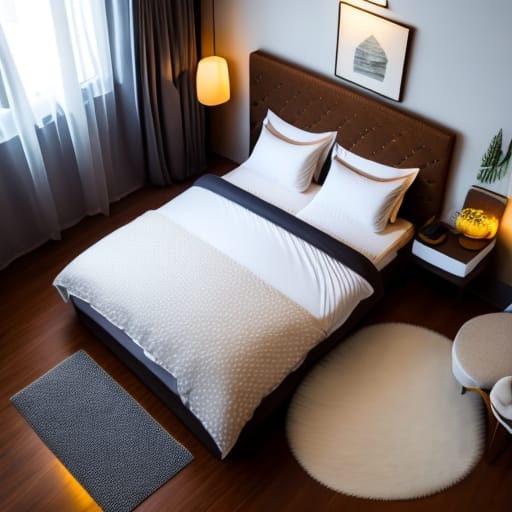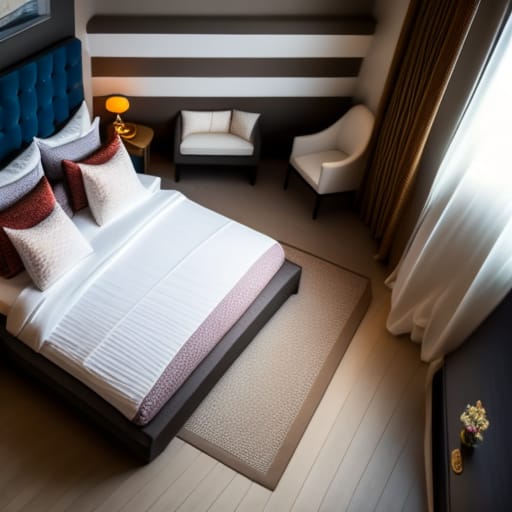When it comes to bedding, one of the key decisions is whether to choose a down or down alternative comforter. But what exactly is down and why does it matter?
In this beginner’s guide, we’ll demystify down and other bedding terminology, compare down and synthetic fills, outline the factors to consider when shopping, and provide recommendations to help you make informed comforter purchases.
The Importance of Quality Comforters
A comforter is designed to keep you warm and comfortable in bed. Choosing one made with quality materials that suits your sleep needs is key for a good night’s rest.
The fill or interior insulation material greatly impacts the comfort, loft, durability and overall functionality of the comforter. Down and down alternative fills offer different properties.
Understanding the fill type and characteristics allows you to select the right comforter for your bedroom’s climate and sleeping preferences.
Overview of Down and Down Alternative Filling
What is Down?
Down refers to the layer of soft, fluffy feathers closest to the skin of ducks and geese that helps insulate them from cold temperatures.
- Down clusters provide exceptional loft, causing air to become trapped between the fibers. This creates thermal insulation that keeps you comfortably warm.
- Since the feathers are extremely lightweight and soft, down comforters provide that desirable billowy appearance and luxurious feel.
What are Down Alternatives?
Down alternative comforters are filled with synthetic materials intended to mimic properties of natural down:
- Most contain polyester fibers stitched into small clusters that mimic baffles of down feathers. Some utilize microfiber fill.
- The materials are lightweight and soft with a plush feel when used in comforters.
- Alternative down provides warmth while remaining affordable compared to duck or goose down.
- Advanced synthetic fills have improved significantly in loft, durability and insulation. However, natural down still surpasses in these areas.
Now that you know the difference between these two comforter filling options, let’s explore them in more detail to help choose between them.
The Benefits of Down Comforters
Unparalleled Softness and Lightness
The most exceptional quality of down comforters is their remarkable softness. They feel like a fluffy cloud enveloping your body, providing a lightweight and airy sensation.
The lofty down traps air and insulating feathers cradle your body gently without compression. This makes for extremely comfortable and breathable bedding.
Superior Insulation and Durability
Down rates higher in “fill power” than synthetic alternatives. This refers to the fluffiness and insulation ability of the filling.
- Fill power ranges from 300-900. Most quality down comforters have fill power between 600-800.
- The higher the fill power, the better the clusters trap air. This means more insulation and durability over years of use.
Over time and washings, down maintains loft well compared to cheaper options. So you get lasting value from your investment into a high quality down comforter or duvet insert.
What Makes Down Alternative Comforters Appealing?
While down reigns supreme in many performance areas, alternative down comforters do have their advantages making them a smart choice for many consumers.
Affordability and Allergy-Friendliness
The main driver behind the down alternative market growth is the more budget-friendly price point. Quality down gets expensive. Synthetics provide that desired fluffiness at a fraction of the cost.
Alternative down comforters also appeal to those with allergies. Natural feather products can irritate allergies. Synthetic fibers are hypoallergenic.
Easy Care
Caring for down requires special attention. It needs gentle cleaning and air drying to prevent damage. Synthetic fill makes maintenance easier. Alternative down comforters hold up well to washing and drying machines.
So if affordability or easy care is important, a down alternative likely fits your lifestyle best.

Factors When Deciding Between Down and Synthetic
When deciding between natural and alternative down comforters, keep these key factors in mind:
Where It’s Used
Consider the climate where you live and bedroom environment. In very cold climates, down provides better insulation. If you sleep hot, alternative down allows more airflow.
Also factor if the comforter gets used seasonally or year-round. Down makes the most sense for year-round bedding.
Fill Power
Higher fill power down around 700-800 has the most loft and durability. It comes at a price but pays off long-term.
For down alternative, quality polyester or microfiber options mimic down well at 300-400 fill power.
Care Requirements
As mentioned earlier, down needs delicate care. Synthetic comforters withstand regular machine washing.
Budget
Although more economical long-term for their longevity, quality down comforters have a hefty upfront cost. Synthetic alternatives run much lower in price.
Demystifying Comforter Terminology
When shopping for a comforter, you’ll encounter various bedding terms. Here’s what they mean:
- Comforter – The fluffy top layer filled with insulation material to keep you warm
- Duvet – A comforter without quilted exterior fabric, usually inserted into a cover
- Quilt – Features stitching to keep filling in place and may have decorative top fabric
- Coverlet – A light throw blanket used for decoration rather than warmth
- Bedspread – Classic thin bed covering, usually decorative
A comforter can be used on its own or with a removable duvet cover. This protects the comforter so it stays clean and new looking longer.

Tips for Picking the Perfect Comforter
Here are final tips for selecting a quality down or down alternative comforter:
- Choose fill power between 600-800 for down and 300-400 for synthetic
- For lightweight warmth, prefer down comforters
- If you sleep hot, better airflow comes from alternative down
- Carefully compare construction quality and materials
- For those with allergies, down alternatives are the way to go
- Cooler climates benefit from down’s insulation properties
- Match your comforter warmth to seasonal use for best comfort
I hope this beginner’s guide takes the confusion out of shopping for the ideal down or down alternative comforter. By understanding differences in these fills along with key factors to compare, you can make an informed decision matching your sleep preferences.
Frequently Asked Questions
What is the difference between down and feathers in comforters?
Down refers specifically to the soft underlayer feathers near the skin that provide warmth. Feathers are the larger, outer layers that can poke through fabric. Quality down comforters only use the tiny insulating down clusters without feathers mixed in that could prickle.
Is down or synthetic fill better for staying warm in bed?
Both down and down alternative comforters aim to trap body heat. However, the superior loft, durability and fill power of natural down creates better insulation for retaining warmth. As it compresses less than synthetic options over time, down maintains that barrier protecting you from colder ambient air.
Why is fill power important in down comforters?
Fill power measures volume and fluffiness of the down filling. Higher numbers like 700-800+ cubic inches per ounce indicate better loft, which traps more insulating air pockets. This increases warmth, comfort and durability so higher quality down keeps insulating evenly over years of use.
Can you put a down comforter in the washing machine?
It is not recommend to machine wash down comforters which can damage delicate materials. Dry cleaning or hand washing with gentle soap, then air drying works best. Always check your comforter’s tag instructions. Synthetic down comforters can withstand washing machines more often due to durable filling.
How often should I replace my down or down alternative comforter?
With proper maintenance like using a duvet cover, spot cleaning, and gentle washing cycles for synthetics, both styles can last over 5 years. Lower quality down comforters may require replacement more often as fill power and loft reduce. But high fill power down around 700-800 fills maintains structure better over decades.
Is down or synthetic fill better for allergies?
Those prone to allergies typically do better with down alternative comforters over natural feather products which can trigger reactions. The synthetic polyester or microfiber clusters avoid concerns related to dust mites or dander found more often with duck or goose down.
When shopping for down comforters, what’s the ideal thread count?
For the outer shell fabric encapsulating the fluffy fill, look for a minimum thread count of 300 for strength and durability. Premium down comforters use cotton sateen or Egyptian cotton shells with a thread count around 600-1000 for enhanced softness and breathability.








